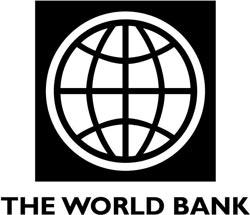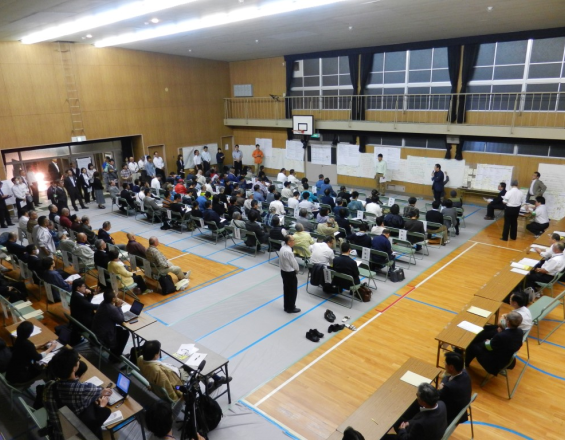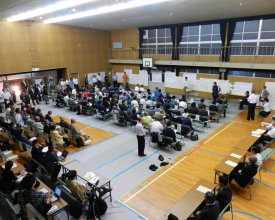
Inclusiveness in Mega Cities

Airin District gathered the largest number of day labors without permanent address since the 1950s. Locals regarded the district as the unofficial Japanese version of slum area, where job seekers gather to look for jobs and cheap hoteling options. Because the district was long being neglected, twenty-one riots occurred from 1961 until 1968. Various issues and problems including poverty, security, environment, hygiene, discrimination was commonly prevalent.
The district of Airin is reviving, building more inclusive communities. Many projects were delivered in this area for urban revitalization in a way to avoid gentrification. Particularly, the Mayor Toru Hashimoto elected in 2011 drove Nishinari Special Zone Project forward, holding one strong vision shared with a wide range of stakeholders. The overall approach included projects and practices around citizen engagement; safe, inclusive, and resilient town development; and building trust of the citizens on local authorities.
Context
Challenges addressed
The district faced challenges, including the following;
a. Economic exclusion – The residents are often those who lost stable jobs and the district gathered day laborers who are either neglected or excluded from the society. Many residents received welfare but without stable jobs.
b. Social exclusion - There has been constant bias and discriminations toward the residents. The politicians were less incentivized to make a change to the district. Social neglect directed to riot (the most recent incident occurred in 2008.)
c. Spatial exclusion – Construction laborers formed cheap inns quarter for lay laborers in the area. These quarters were isolated and pinned down in one specific place in Airin district leading to gentrification and spatial exclusion.
In addition, there were no mechanisms to coordinate stakeholders, as people had little interest to sit on the same table.
Location
Process
Summary of the process
To address the challenges and make Airin district a safe, inclusive, and resilient district, the prefectural and local government took measures around the three key objectives:
a) Social Inclusion: to improve the involvement of stakeholders in planning and development processes and make them equal partners.
b) Economic Inclusion: to open economic opportunities to the under-served social groups.
c) Spatial Inclusion: to provide affordable necessities such as housing, water and sanitation, safe and easy access to the public spaces, and restructuring of the area by avoiding gentrification.
To involve a wide range of existing and potential stakeholders, the governments also took a bottom-up approach by engaging citizen and building trust in the governments.
Building Blocks
Engaging Citizens & Building Trust in Local Authorities via Participatory Approaches and Tools
For revival, Airin district needed bottom-up approach, which aims to put emphasis on local residents’ actions and listen to them and relevant organizations, departing from a traditional method of governmental organizations-led decision making. The district started an urban regeneration forum led by a public entity in late 1990s to facilitate discussion and dialogue among different stakeholders, which is followed by various community institutions funded to foster communication by involving all interested groups.
Nishinari ward office plays not only coordination mechanism but works as a part of the team aiming to develop Airin District. Airin was indeed a lagging district, and the level of mistrust was extremely deep. The local authority was therefore conscious of offering inclusive service and working with politeness and high respect to residents. It gradually melted the tension. While Mayor Hashimoto largely triggered the reform, the residents kept its implementation through a public-private forum called area management secretariat.
Enabling factors
- Step-by-step efforts made by the local government to steadily involve fragmented stakeholders.
Lesson learned
With the area management secretariat, the district invited a wide range of stakeholders to city planning, for the first time in history. From Airin district story, a clear lesson to learn is how critical inclusiveness is when making a change or reform, even if the change gets slowed down with too many stakeholders. The secretariat triggered public space improvement, solving crimes and violence issues, including drugs, and creating job opportunities for the residents. It was a case of building and practicing a true democratic process, which may be slow but efficient and important for bigger changes.
Enhancing Social Inclusion and Cohesion through Investments in Urban Services
Measures for public welfare were divided into two approaches. One was the improvement of welfare for residents, using community-based welfare facilities. The facilities provided services such as employment support, education, and medical care. The other was municipal houses, such as Osaka Municipal housing and Osaka Prefectural housing for low-income families living with poor living conditions. Airin General Center, which had three functions of medical care, housing and labor, was established in 1970.
Apart from these public efforts, the Supportive House system, carried out by a private social company without the government’s financial support, was established in the 2000s to provide support to poor people for housing. Though the influence of the system on the whole district is limited, it has still managed to provide 700 rooms.
Enabling factors
- Public and private investment to improve existing urban stocks including old community centers and public housing
Lesson learned
In Nishinari ward, application of existing clearance-type improvements was very difficult since the area was large and basic infrastructure being relatively poor, so the approach adopted was to utilize the existing stock of the old built-up area efficiently. The redevelopment of Airin District, on the other hand, could cause gentrification and destroy the multilayered safety nets established in this area. For a positive spatial impact, conscious efforts have been made to avoid gentrification, which has kept the issues, such as forcible expulsion of welfare beneficiaries and homeless people, at bay. Revitalization of the region that will not exclude socially vulnerable people is more important than anything else.
Enhancing Spatial Inclusion through Strategic Choices for Management of Public Spaces, the Location of Urban Amenities, and Social Infrastructure
In 2012, the City of Osaka launched an extensive project called the Nishinari Special District Vision, which aimed to revitalize Airin district. This project, combined with the bottom-up measures, allowed community improvement measures to be implemented at an unprecedented rate. A sum of 6.7 billion yen was invested over a span of five years.
The Nishinari Special District Vision intended to take measures for revitalizing the area, protecting the living of the people who have been living there. For immediate change of perception, it came up with a slogan “a town where children's voices can be heard”.
The vision plan was organized into three phases:
Intensive phase: the decision was made to carry out measures aimed at improving the community environment, such as tuberculosis prevention and setting up security cameras.
Mid- to long-term measures: it involved the provision of quality housing for households with children, putting in place a hub for international tourism, among other measures.
Future Investment Project and Major Undertakings phase: to define the redevelopment of the station front area and the effective utilization of unused public land.
Enabling factors
- Strategic choices in the district vision by the municipal government for management of public spaces, the location of urban amenities, and social infrastructure
- A clear future vision shared with a wide range of stakeholders
Lesson learned
Impact of Nishinari Special District Vision and bottom-up measures led to a significant change in Airin district’s public perception. In the past, there had been a strong perception that Airin was a dangerous, dirty, and untouchable town. In recent years, however, there has been a rise in the number of tourists (from overseas as well other parts of Japan) who want to see the real Osaka in a friendly atmosphere of a traditional commercial and working-class neighborhood.
Ensuring Economic Inclusion through Connecting Lagging Neighborhoods to Jobs
There have been few companies offering jobs in the Airin district other than constructors since the 1980s. Under the Nishinari Special District Vision, the reconstruction of the Airin District Comprehensive Center gave the opportunity to encourage companies to offer jobs other than casual construction jobs. The Nishinari Labor Welfare Center within the Airin District Comprehensive Center supervises job recruiters. The Nishinari Labor Welfare Center aims to give guidance to such informal recruiters and formalize them. This has increased the job spectrum for the residents and day laborers and has further enhanced the local economy and status of the neighborhood.
Enabling factors
- Renewal of an old district center to serve as a job placement office
- Cooperation with labor welfare office to create more formal opportunities for unstable job labors
Lesson learned
Airin district had been a hub for day laborers in the past, which has merely been reduced to construction jobs lately, in both formal and informal sector. It was realized that for the development and progress of district and ward, economic inclusion through job creation is key.
Impacts
Economic Impact:
- The reconstruction of the Airin District Comprehensive Center gave the opportunity to encourage companies to offer jobs other than casual construction jobs.
- Real-estate prices, which had been stagnant for many years, are beginning to rise, bringing about dynamic changes to the town. It can be expected that such changes will continue at a considerable rate.
Social Impact:
- Many social changes have been observed – a) amount of illegally dumped garbage has come down b) number of illegally parked bicycles have reduced from 4,500 in 2014 to 2,560 in 2017 c) crime rates have declined with the anti-crime efforts, and d) approx. 30-40% decline in Tuberculosis patients from 2009 to 2015.
- For single day-laborers employed in construction sites, job placement, welfare consultation, free medical treatment, and a jobless-insurance system were introduced only in the Airin district as a special quarter. Many laborers without a certificate of residence stayed in the flophouses (cheap urban hostels) built by private entrepreneurs.
Spatial Impact:
- With the establishment of the Nishinari Special District Vision, private investments increased sharply (such as trading of real estate and construction of hotels in expectation of an increase in the number of inbound tourists).
Beneficiaries
Residents, day laborers, and land/property owners of Airin district
